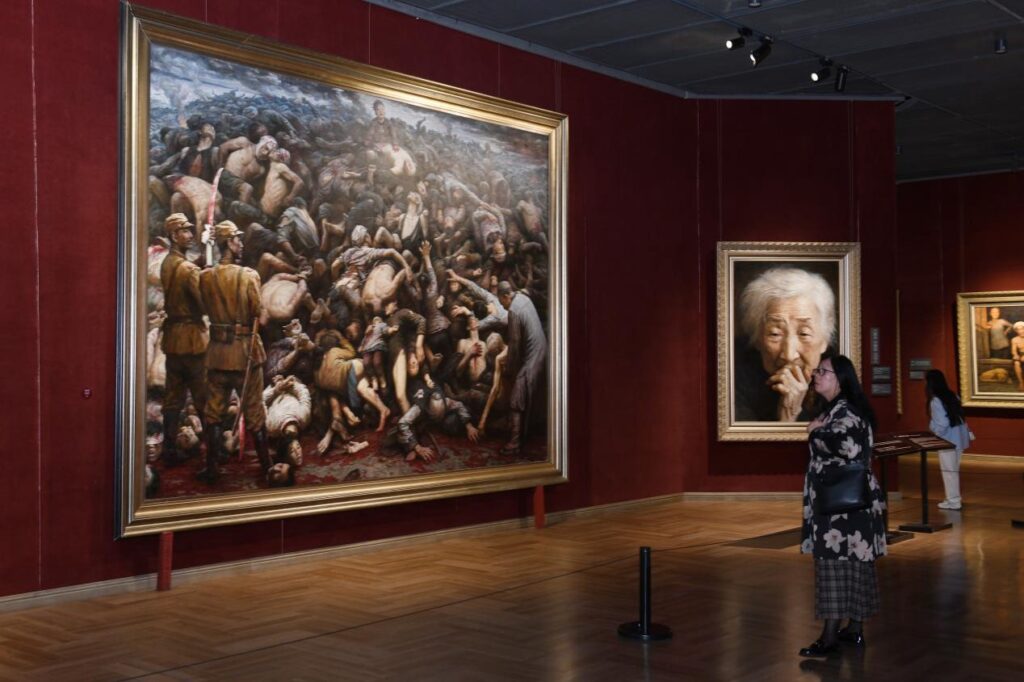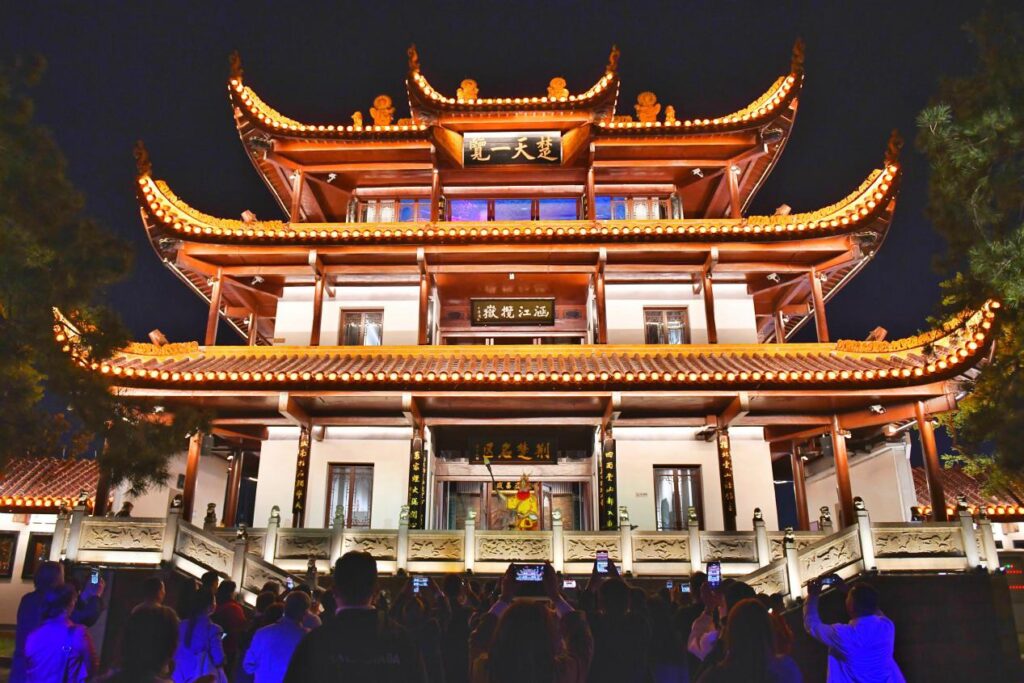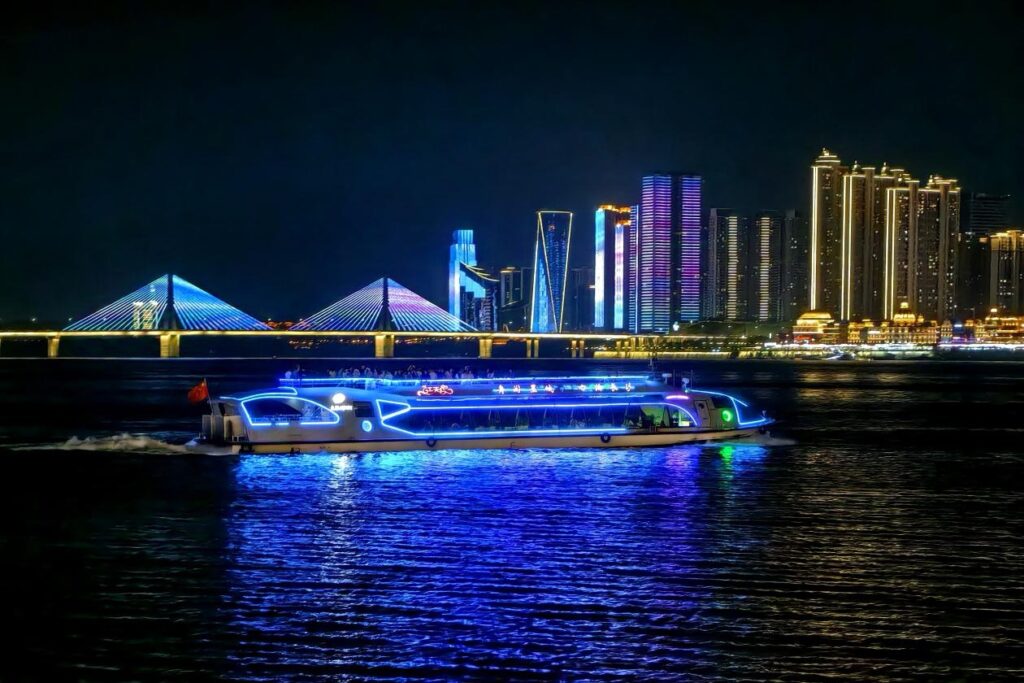From October 28 to November 1, the 2024 “Opportunity China: Discovering Changsha” event welcomed senior representatives from 16 overseas Chinese media outlets to Changsha, China. In addition to learning about Changsha’s successes in trade cooperation with Africa, the delegates had the chance to immerse themselves in Hunan’s distinctive cultural landscape. Highlights of the tour included hearing the time-honored sounds of study at Yuelu Academy, meeting the famed “Sleeping Beauty of the East” Lady Xin Zhui, exploring the educational heritage at Hunan First Normal University, interacting with the traditional “Kui Xing” deity at Tianxin Pavilion, and taking a scenic night cruise along the Xiang River.
Yuelu Academy: A Thousand-Year Legacy
Changsha, a historic city with more than 3,000 years of continuous civilization, is home to many renowned cultural sites, including the Yuelu Academy, one of China’s oldest institutions of learning. Established in 976 AD during the Northern Song Dynasty, the academy is situated beneath Yuelu Mountain along the Xiang River and has preserved its legacy for over a millennium. Now part of Hunan University, it remains a distinguished center of learning and symbolizes the enduring legacy of Hunan’s educational heritage.
Visitors to Yuelu Academy are captivated by the historic Ming and Qing architecture, the ancient stone inscriptions, and the academy’s timeless teaching tradition. At its core is the lecture hall, an open space that embodies the academy’s “open-door” philosophy. The hall features a plaque inscribed with “Seek Truth from Facts,” a principle that has influenced generations of prominent figures in Chinese history and serves as a central tenet of Huxiang culture.

Hunan First Normal University: Cradle of Educators and Culture
Another institution integral to Hunan’s cultural and educational lineage is Hunan First Normal University. Originally founded as Changsha Chengnan Academy in 1161 by the Neo-Confucian scholar Zhang Shi, a leading figure of the Huxiang school, it became Hunan First Normal School in 1903, laying the groundwork for modern teacher training in Hunan. With over a century of history, Hunan First Normal University has produced countless educators who have become the backbone of rural and foundational education in Hunan, embodying a commitment to advancing regional development through education.

Changsha’s Museums: Celebrating Tradition and Modernity
Culture forms the heart of Changsha’s identity, and the city has invested significantly in establishing itself as an international cultural hub, earning titles like “East Asian Cultural City” and “City of Media Arts.” One of Changsha’s key cultural landmarks, the Hunan Museum, houses over 570,000 artifacts, including rare bronzeware, ceramics, and historic paintings. The museum’s renowned exhibits, such as the Mawangdui Han Tomb artifacts, showcase Hunan’s rich historical legacy, while interactive experiences allow visitors to engage with Han culture through traditional dress, cuisine, and music.
Meanwhile, modern art spaces like the Li Zijian Art Museum and the Xie Zilong Photography Museum present a dynamic view of contemporary artistic expression. The Li Zijian Art Museum, recognized as the world’s largest museum dedicated to a single artist, and the Xie Zilong Photography Museum, China’s first museum-grade photography space, have become popular attractions due to their architectural beauty and engaging exhibitions. Together, they showcase the depth and diversity of Changsha’s artistic landscape, blending historical reverence with contemporary creativity.

Revitalizing Cultural Tourism with Changsha’s Nightlife
Changsha’s vibrant night economy is a major attraction for both domestic and international visitors. The Tianxin Pavilion Light and Shadow Park, a cultural project combining modern technology with historical ambiance, has added new appeal to this landmark. Originally built in the Ming Dynasty, Tianxin Pavilion has long symbolized Changsha’s heritage, and in celebration of its centennial as a public space, it has been transformed into a focal point for nighttime tourism. Visitors can enjoy immersive light shows, traditional Xiang opera performances, and illuminated pathways that bring Changsha’s 3,000-year history to life.
A night cruise along the Xiang River also offers breathtaking views of Changsha’s cityscape, adding to a thriving night economy that includes everything from neon-lit bar streets to bustling late-night food markets. With its diverse nighttime offerings, Changsha consistently ranks among China’s top cities for night-time economic activity.
By blending traditional heritage with modern innovations, Changsha leaves a lasting impression on visitors and continues to expand its appeal as a cultural destination. The overseas Chinese media representatives departed with a deeper understanding of Hunan’s cultural richness and Changsha’s dynamic development as a city that harmoniously balances history and innovation.
